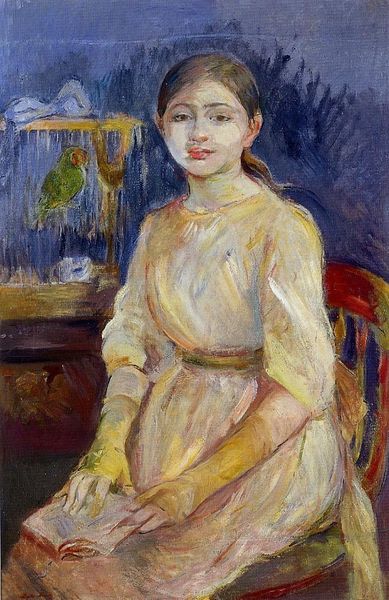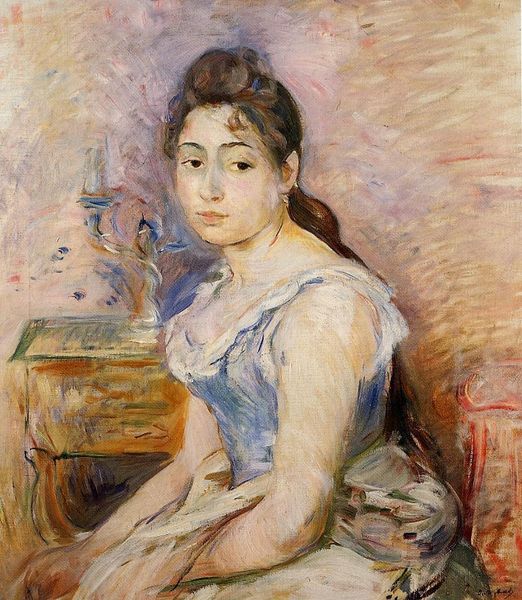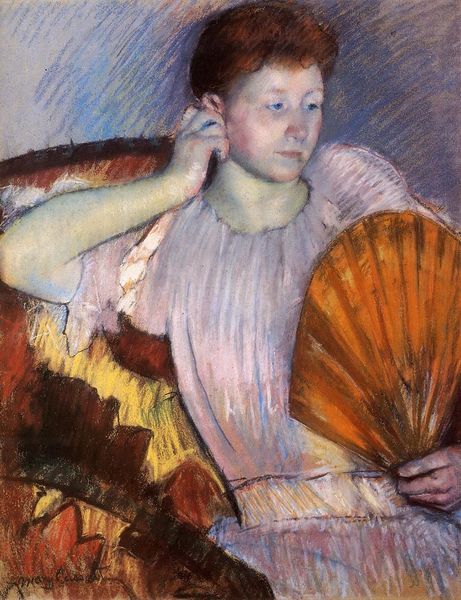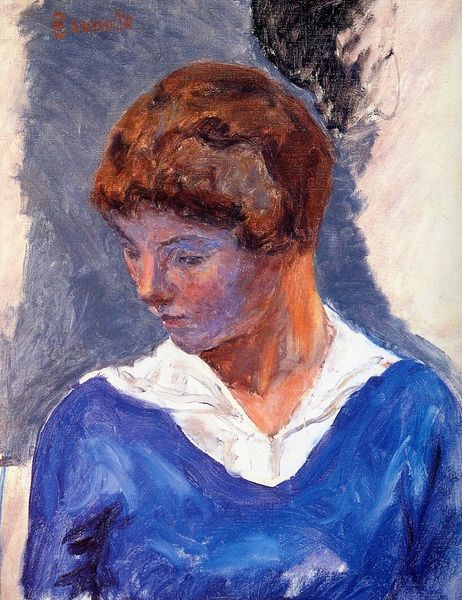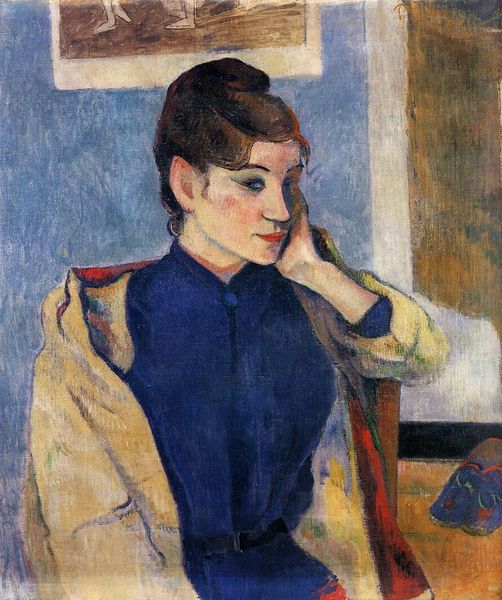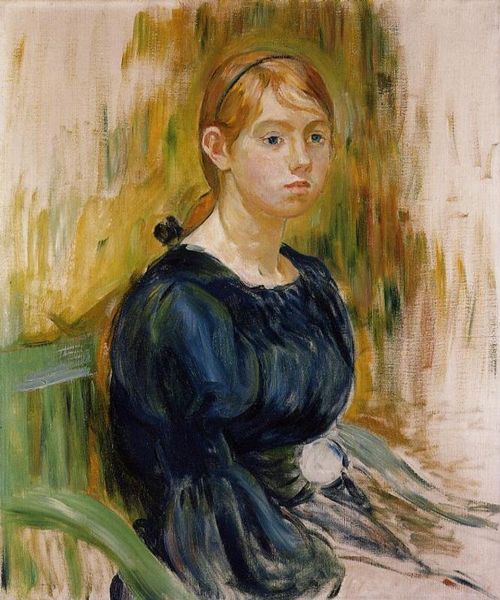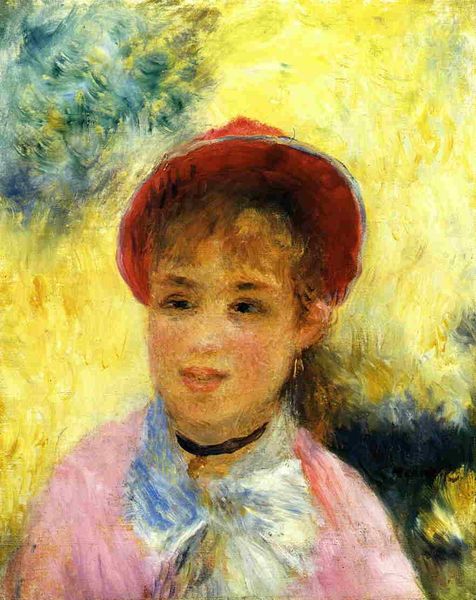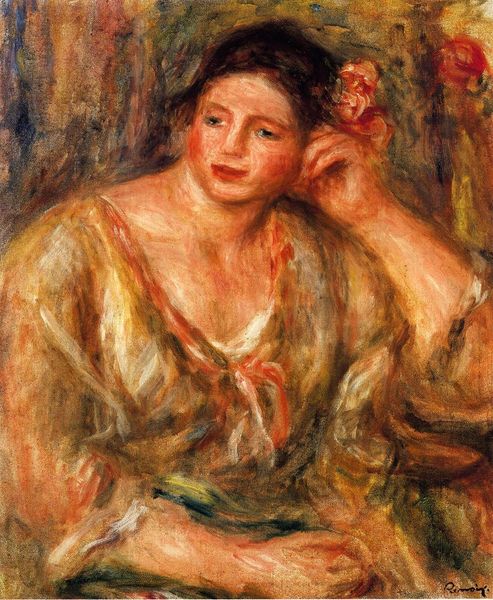
Copyright: Public domain
Curator: Berthe Morisot painted "Young Girl in White" in 1891, and it now resides in a private collection. Editor: There's a hazy dreaminess to this painting, isn’t there? It feels unfinished, like a fleeting memory rendered in soft focus. Curator: Look closely, and you'll notice how Morisot is less concerned with perfect representation, and more absorbed in capturing the effect of light on surfaces and in the atmosphere. The materiality itself, the visible brushstrokes and unblended colors, becomes the subject. The labor is almost visible on the surface. Editor: Precisely! It’s the structure that captivates me. The almost aggressively loose brushwork seems to deconstruct the form even as it creates it. Note how the composition draws the eye towards her expression, which seems to radiate the quiet grace characteristic of Romanticism. Curator: It's more than that. Morisot was a woman artist in a world dominated by men, and painting intimate, domestic scenes allowed her to carve out a space for herself and other women both as artists and subjects. This also reflects the limitations placed on women and access to supplies or time dedicated to creating. Editor: Interesting perspective. From a purely aesthetic viewpoint, though, the figure's posture and the background elements are harmoniously combined, inviting us to consider a visual balance between the elements; the light-infused strokes create a serene visual impression that transcends temporal restraints. Curator: We should think, though, about how the means of making were defined at the time. This casual intimacy wasn't just an aesthetic choice. It directly reflects Morisot’s social and economic standing; she had access and leisure to focus on painting in the open-air. Editor: I suppose my formal analysis isolates this single aesthetic moment—almost too much. But it does remind us of Morisot's singular artistic vision. Curator: True, her singular vision occurred due to the resources available and constraints put upon her. Editor: It’s definitely a stimulating intersection to consider when viewing Morisot's artworks.
Comments
No comments
Be the first to comment and join the conversation on the ultimate creative platform.


